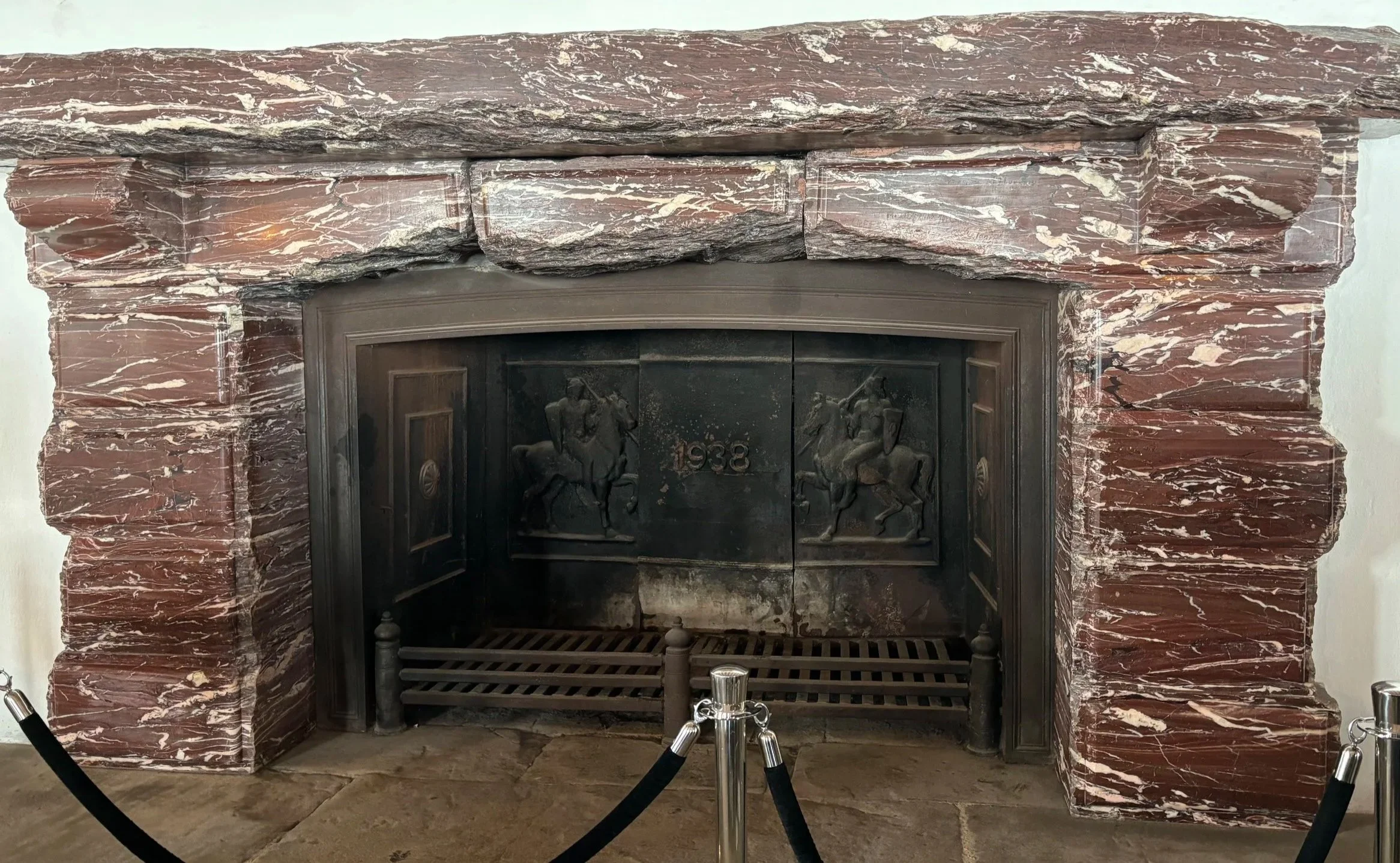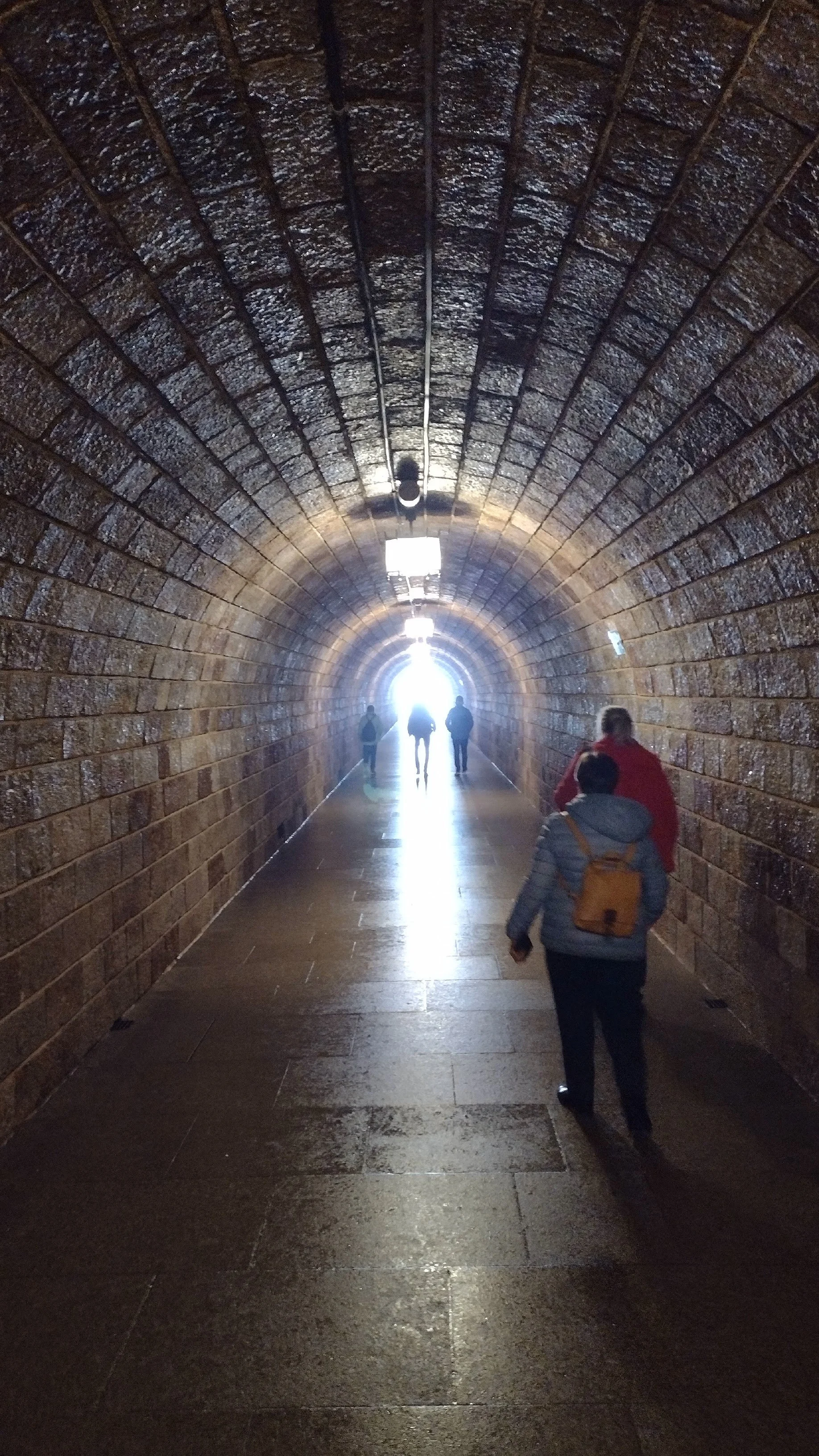Final Steps with the Band of Brothers
The Eagle’s Nest just visible in the morning mist atop Kehlstein mountain in Bavaria, Germany
The final stop on our Band of Brothers tour across Europe took us to the Kehlsteinhaus, also known as the Eagle's Nest. It’s located in Obersalzberg, once Hitler’s favorite mountain retreat outside the town of Berchtesgaden in the Bavaria region of Germany. Eagle’s Nest was a not a residence, as some mistakenly think, but was commissioned by Martin Bormann as a Nazi Party as a gathering place for official and social functions. Most of the Nazi inner circle maintained homes down the mountain nearby. Dubbed Hitler’s tea room, the Eagle’s Nest cost $30 million to build—nearly $300 million in today’s dollars—roughly the price of a new White House ballroom. The project was completed in 13 months, searchlights brought in so construction could grind on 24 hours a day to ensure it was ready to present to Hitler for his 50th birthday in 1939. They met that deadline; twelve workers died during the rushed construction.
The creepy vibe begins when you arrived at the entrance tunnel. Buses ferry crowds up the steep mountain to this tunnel, carved through the middle of the mountain. The air inside the tunnel is chilly and damp as you walk in, but it was once heated. When it was first built, the structure was lined with marble and a heating system forced in warm air from an adjoining service tunnel. It was an innovative, expensive feature, tax dollars dedicated to ensuring the Nazi —who were government employees after all—were comfortable as they transited this tunnel in their vehicles.
An elevator in the tunnel, adorned with Venetian glass and polished brass zips tourists up to the top of the mountain in a minute’s time; when it was originally constructed, this took a full ten minutes.
On the topside is a gathering room along with a dining room that features a fireplace tiled with Italian marble gifted by Benito Mussolini. Look closely and you’ll see where Allied soldiers, who arrived here near the end of the war, chipped off bits of the stone for souvenirs. This main room is now a restaurant where our group nibbled schnitzel and sipped beer as we took in the contours of this one-of-a-kind bistro. When I shared with our guide the uneasiness I felt being in a place where Hitler and his minions once mingled, our guide said, “Just remember, Pam. Hitler would HATE that we’re here.” That brightened my mood considerably. A room that once served as Hitler’s office is now, fittingly, a storage closet.
Fireplace inset that commemorates the building’s completion.
No external guides are allowed to lead tours here to keep out neo-Nazis and post-war Nazi sympathizers who might try to bend the truth. Signage and displays explain the history of the facility and as we saw when we visited the Dachau death camp a few days earlier, there were many school groups there to learn more about this difficult passage in German history. Erasing history, as thinking people know, consigns us to repeat its grievous mistakes. The Germans want to ensure sure their young people know exactly what happened and who was responsible.
Explanatory signage in the Eagle’s Nest
The most inexplicable thing to me is how Hitler and his compatriots plotted such evil amid the glory and beauty of the Alps. Multiple rocky paths surround the facility, an outdoor beer garden offering refreshment to the many hikers, bikers, and tourists. The views are transfixing, breathtaking, stunning. At this high altitude—six-thousand feet—the vista changes by the moment. A cluster of clouds drift by and obscure the sun. The skies darken and the temperature drops. Minutes later, the full sun emerges. The warmth returns. Looking below, you see a valley vast and verdant, where the complex of homes, bunkers, and connecting tunnels once stood to house and protect Hitler and members of the Nazi command. It was thought they would retreat here as the Allies closed in to make their last stand. The Royal Air Force bombed the complex in the closing days of the war.
Rocky path across the mountain behind the Eagle’s Nest
The summit cross, erected in 1960, that features the edelweiss blossom integral to Alpine culture (nod to The Sound of Music
It’s unclear which Allied unit actually arrived at the Eagle’s Nest first The final episode of the Band of Brothers depicts Easy Company seizing it, the soldiers lazing on the sundeck of the facility as news comes the war is over. But French soldiers and a Spanish Republican unit have claimed they were first on-site. It’s possible there’s was confusion in the ranks about which was the Eagle’s Nest and which was the Berghof, Hitler’s Bavarian home located down the mountain.
Exiting the Eagle’s Nest
We spent the final nights of the tour in Zell Am See, Austria at the Grand Hotel. It’s located just across the border from Bavaria and was an Allied base of operations in 1945. How soothing the view of the lake outside their hotel windows must have been to soldiers who’d fought their way for nearly a year across the breadth of Europe. Aside from the loud Italians who partied right outside our window for most of the night, we found this mountain hamlet a gentle, tranquil place too.
If you’re considering a World War Two tour, make sure you consider the National World War Two Museum’s offerings. There is so much history to see, you’ll want expert guides who ensure you experience the essential high points. The WWII museum guarantees this with historians, native guides, and even actors from the Band of Brothers along to provide details and color you won’t get anywhere else.












